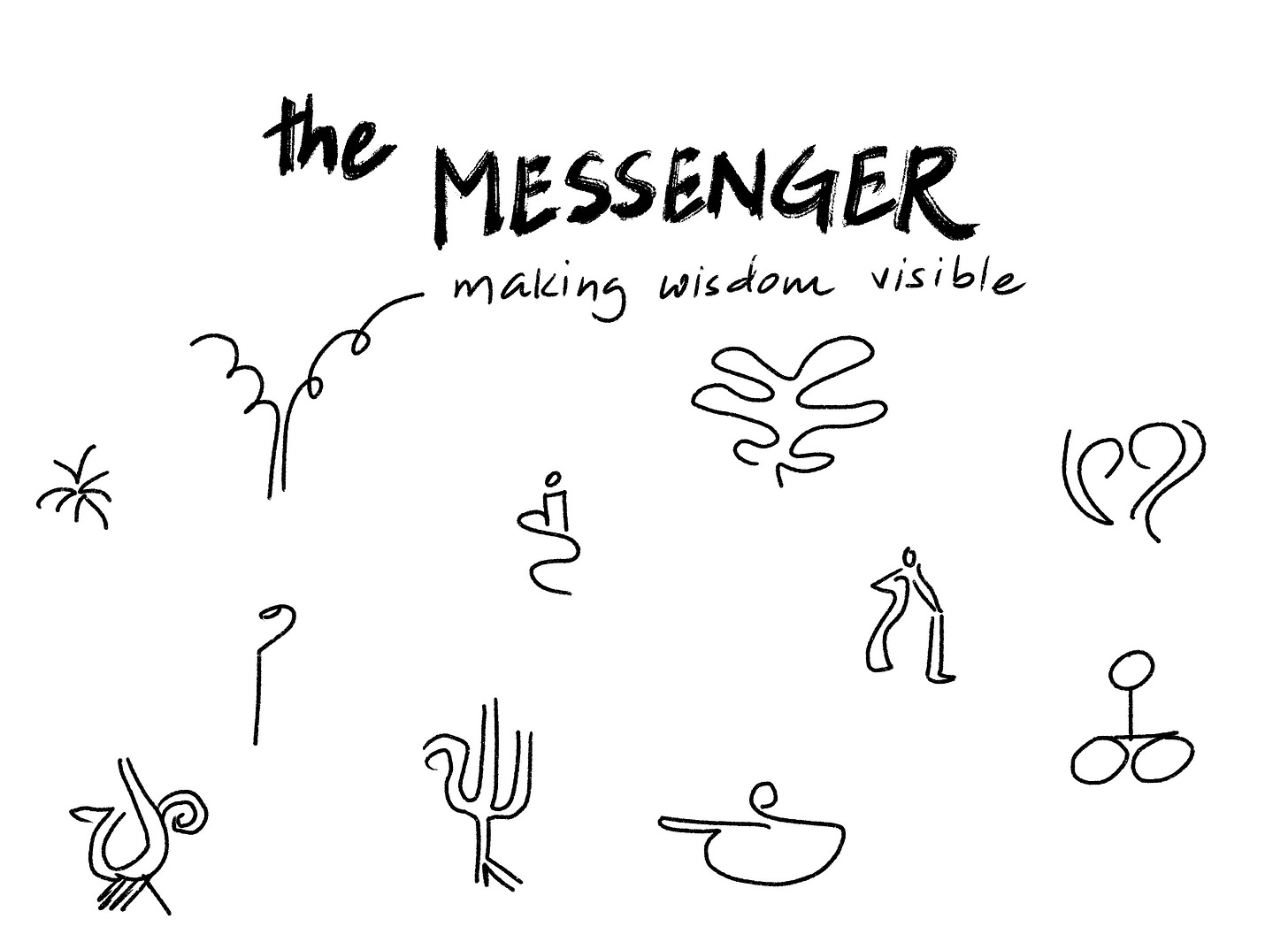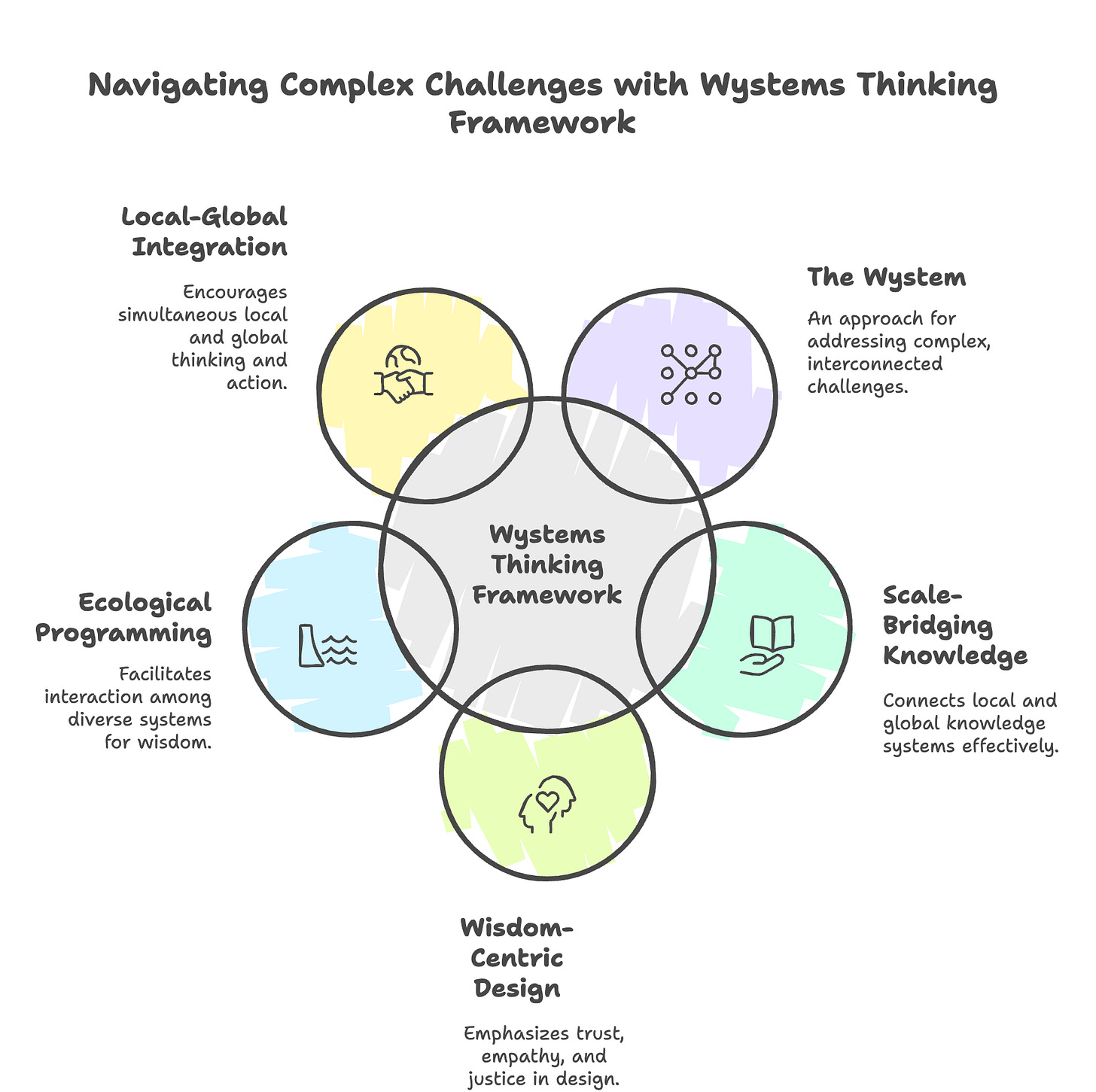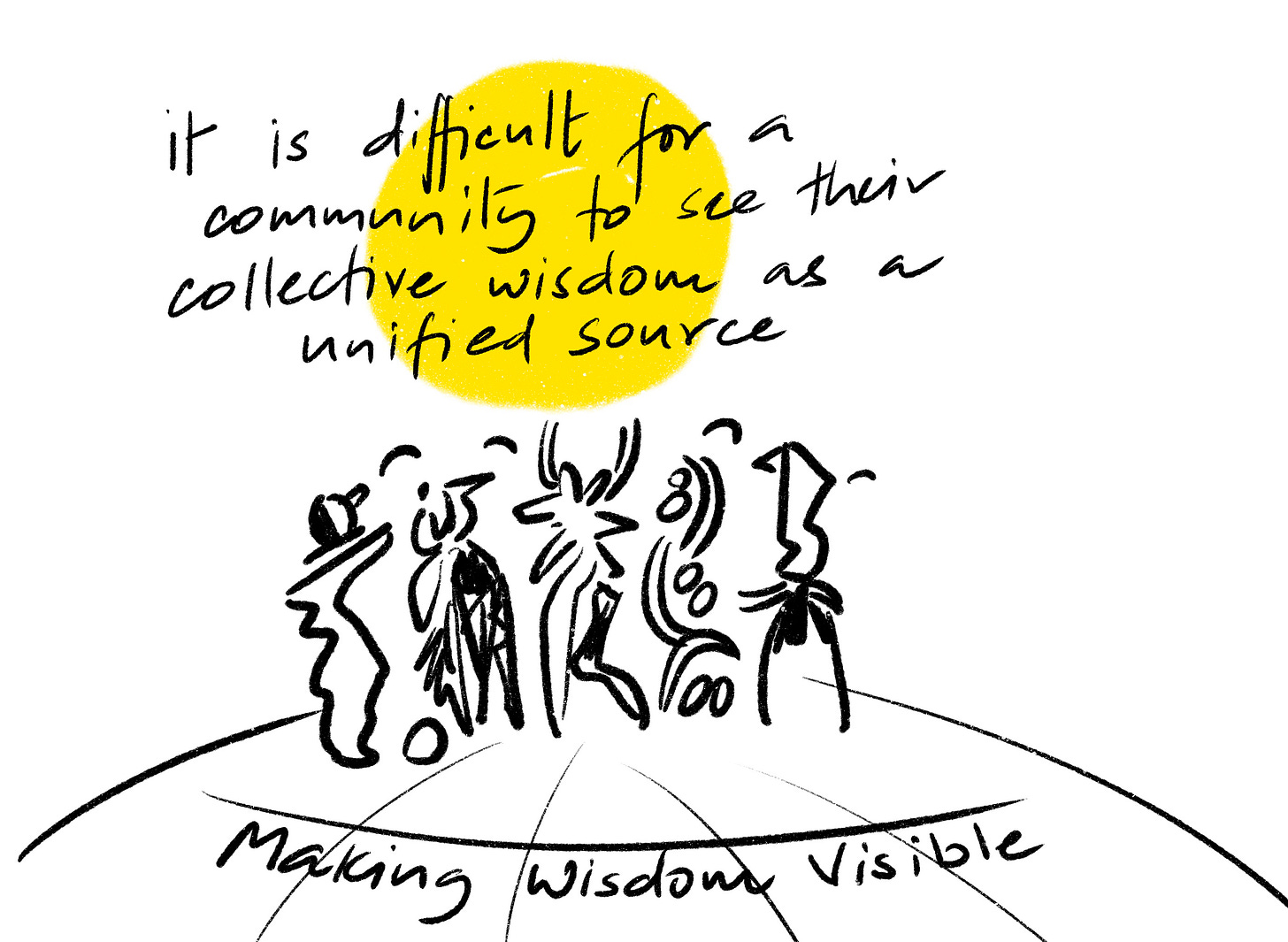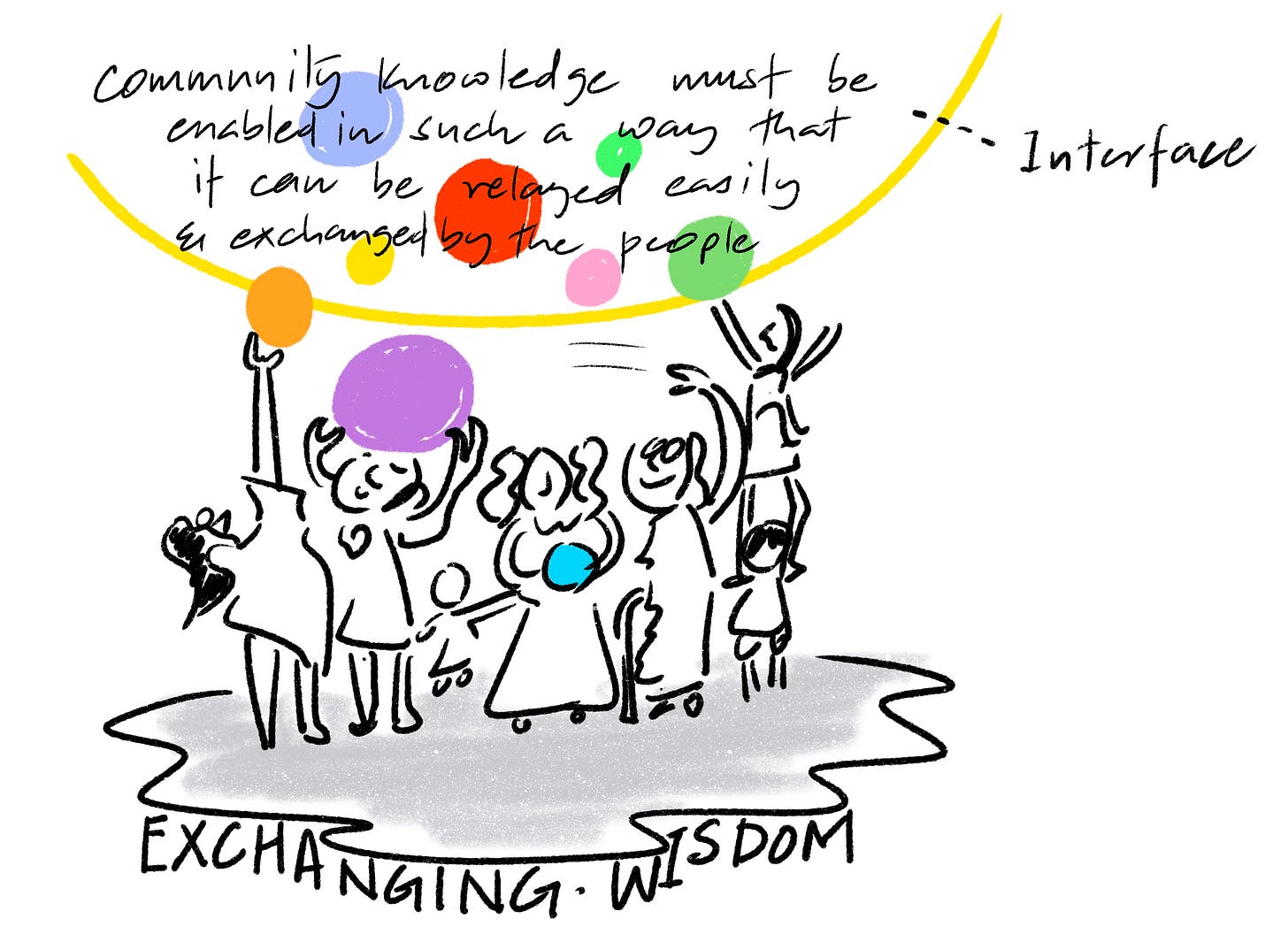Wystems Thinking 6: A Summary
Key Concepts: A New Framework for Complex Problems
Over the past five essays, we've explored Wystems Thinking—a framework designed to help us navigate the complex, interconnected challenges of our world. At its core, Wystems Thinking represents an evolution beyond traditional systems thinking, recognizing that computational, social, and ecological networks are not separate domains but deeply interwoven structures.
The key concepts we've introduced include:
The Wystem: An approach to tackling "wicked problems"—complex challenges that resist straightforward solutions due to their interconnected nature and constantly evolving parameters.
Scale-Bridging Knowledge Systems: Frameworks that connect intimate local knowledge with global information systems, allowing us to think and act effectively across scales.
Wisdom-Centric Design: An extension of traditional design approaches that emphasizes not just efficiency and usability, but also trust, empathy, and justice.
The Ecological Programming Interface (EPI): A framework for connecting diverse systems—technological, natural, and social—enabling them to interact in ways that promote collective wisdom.
Local-Global Integration: The practice of simultaneously thinking locally while acting globally, and thinking globally while acting locally.
From Local Knowledge to Global Systems
Our journey began by examining how our relationship with knowledge has transformed throughout human history. For most of our existence, humans possessed intimate knowledge of their local environments—the biodiversity, the soil conditions, the seasonal patterns—while having limited information about distant places. Today, we find ourselves in the opposite situation: we have unprecedented access to global information but are increasingly disconnected from our immediate environments.
Wystems Thinking proposes that this either/or dichotomy is unnecessary. We can—and must—develop approaches that value both local wisdom and global understanding. Technology, properly conceived and implemented, can serve as a bridge between these scales, creating what we called "scale-bridging knowledge systems." These systems preserve the richness of local knowledge while making it accessible and relevant at broader scales, enabling communities to share insights and practices across different contexts.
This integration is not just desirable but essential for addressing the complex challenges we face today, from climate change to social inequality. By designing frameworks that honor both traditional wisdom and modern scientific understanding, we can create the conditions for sustainable, thriving communities at all scales.
The Evolution of Design Thinking
Building on this foundation, we explored how design—the process of transforming existing situations into preferred ones—must evolve to meet today's challenges. Drawing on the work of Herbert Simon and Donald Norman, we examined how design has traditionally focused on problem-solving (Simon) and user experience (Norman).
While these approaches remain valuable, we proposed a third dimension: Wisdom-Centric Design. This approach asks not just how we can make systems efficient or intuitive, but how we can create systems that actively promote collective wisdom, trust, and justice. Good design, in this view, must reduce cognitive load and solve problems effectively while also fostering ethical relationships and promoting wellbeing.
Wisdom-Centric Design centers around three key principles:
Trust Architecture: Designing systems that build and maintain trust between users, communities, and institutions.
Empathy Integration: Ensuring designs recognize and respond to the full spectrum of human experience and need.
Justice-Centered Design: Creating systems that actively promote fairness and reduce inequalities rather than reinforcing existing power structures.
These principles extend beyond traditional design considerations to address the deeper ethical implications of the systems we create. By embedding values like transparency, inclusion, and fairness into the design process, we can create technologies and institutions that not only work well but actively contribute to a more just and sustainable world.
The Ecological Programming Interface
A central innovation in our Wystems Thinking framework is the Ecological Programming Interface (EPI). Drawing inspiration from programming, where Application Programming Interfaces (APIs) allow different software systems to communicate, the EPI creates standardized methods for diverse systems—technological, natural, and social—to interact.
The EPI embodies the three pillars of wisdom-centric design:
As trust architecture, it establishes transparent protocols for interaction and accountability
Through empathy integration, it creates channels for sharing diverse perspectives and needs
Via justice-centered design, it ensures equitable access to resources and decision-making power
In practice, an EPI operates at multiple scales, connecting local wisdom with global systems. It allows:
Individual actors (like farmers) to access resources while contributing their local knowledge
Organizations to coordinate while maintaining their unique approaches and values
Ecosystems to develop collective intelligence while respecting local autonomy
The EPI represents more than just a technical solution—it provides a framework for Wystems Thinking itself, recognizing the inseparability of computational, social, and ecological networks. Through this lens, design becomes not just a tool for efficiency or user experience, but a medium for fostering wisdom across scales.
From Theory to Practice: The Melukote Case Study
To ground these concepts in real-world application, we examined efforts to transform Melukote into a model constituency that combines economy and ecology to create a flourishing society. This case study brought together civil society leaders, philanthropy, and elected representatives to address interlinked challenges including agricultural sustainability, education, healthcare, and waste management.
The Melukote initiative exemplifies Wystems Thinking in action. It bridges local and global scales of knowledge by combining regional agricultural traditions with broader technological and governance innovations. It creates "scale-bridging knowledge systems" by connecting different perspectives and domains of expertise. And it embodies wisdom-centric design by developing systems that not only work efficiently but actively promote trust, foster empathy, and advance justice.
By leveraging existing institutions like Primary Agricultural Cooperatives (PACs) and Panchayats while reimagining them through a lens of transparency and data-driven governance, this initiative aims to create the "trust architecture" essential to Wystems Thinking. The journey toward a flourishing Melukote—where economy and ecology reinforce rather than undermine each other—represents a living laboratory for creating systems that promote collective wisdom while respecting local autonomy and ecological boundaries.
The Way Forward: Implementing Wystems Thinking
As we look to the future, implementing Wystems Thinking requires action at multiple levels:
Individual Level
Each of us can begin practicing Wystems Thinking in our daily lives by:
Reconnecting with our local environments while maintaining global awareness
Considering how our choices impact interconnected systems
Seeking out and valuing diverse forms of knowledge, from traditional wisdom to scientific understanding
Evaluating the technologies and institutions we engage with through the lens of trust, empathy, and justice
Organizational Level
Organizations can adopt Wystems Thinking by:
Implementing wisdom-centric design principles in their products, services, and systems
Developing scale-bridging knowledge systems that connect local insights with global understanding
Creating trust architecture through transparency, accountability, and ethical governance
Fostering collaboration across disciplinary and organizational boundaries
Building interfaces that enable diverse stakeholders to participate meaningfully in decision-making
Societal Level
At the broadest scale, implementing Wystems Thinking means:
Designing governance systems that bridge local autonomy with global coordination
Creating educational approaches that value both practical wisdom and theoretical knowledge
Developing technologies that serve as connective tissue between different ways of knowing
Building economic models that recognize the inseparability of human and ecological wellbeing
Fostering a culture that values wisdom as much as efficiency or innovation
The challenges we face today—from climate change to social inequality to technological disruption—demand new ways of thinking and acting. Wystems Thinking offers a framework not just for understanding these complex, interconnected problems but for addressing them in ways that promote wisdom, justice, and sustainability.
By bridging local and global scales of knowledge, designing for wisdom rather than just efficiency, and creating interfaces that connect diverse systems, we can begin to navigate the complexity of our world in more effective and ethical ways. The path forward isn't about choosing between tradition and innovation, between local wisdom and global systems, or between human needs and ecological health. It's about finding ways to integrate these apparent opposites into approaches that honor the full complexity of our interconnected world.
In the end, Wystems Thinking isn't just a theoretical framework—it's an invitation to reimagine our relationship with nature, with technology and with each other. It's a call to create systems that don't just solve problems but actively foster the conditions for wisdom to emerge. As we continue to develop and refine this approach, we move closer to a future where we can navigate complexity with greater agility, empathy, and insight—creating not just more efficient systems but more just, sustainable, and flourishing societies.
From Climate Recipes, Bhitarkanika edition on coastal landscapes of Odisha











